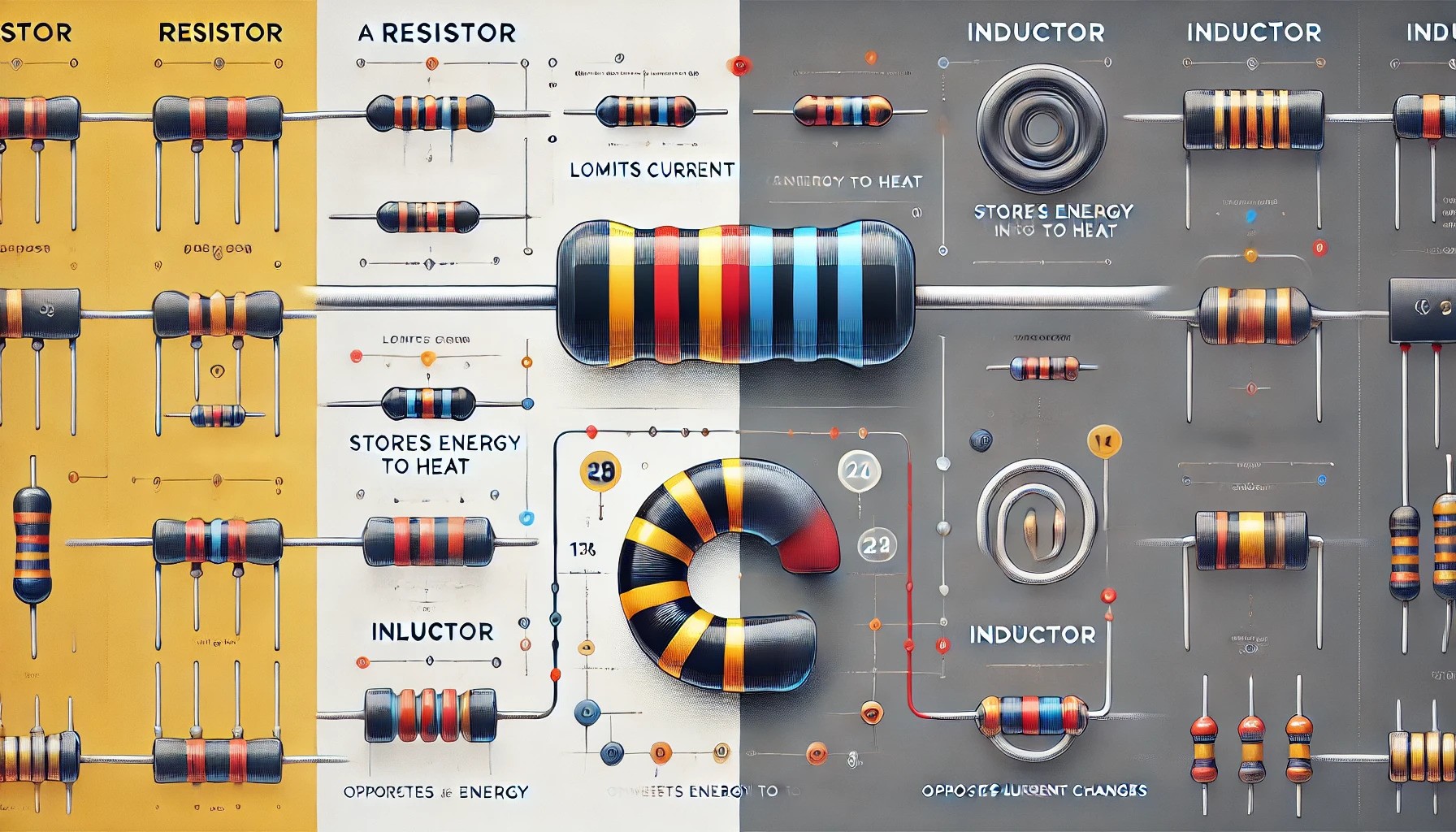Resistors and inductors are fundamental components in electrical and electronic circuits, but they serve very different purposes. This article explains the core differences between these components, focusing on their properties, functionality, and applications.
1. Definition
-
Resistor:
A resistor is a passive component designed to resist the flow of electric current, converting electrical energy into heat. Its resistance is measured in ohms (Ω). -
Inductor:
An inductor is a passive component that stores energy in a magnetic field when electrical current passes through it. It opposes changes in current and is characterized by inductance, measured in henries (H).
2. Symbol and Circuit Representation
- Resistor Symbol: A zigzag or rectangular shape in circuit diagrams.
- Inductor Symbol: A coiled wire shape, representing the inductor's winding structure.
3. Primary Function
- Resistor: Limits current, reduces voltage, and dissipates energy as heat.
- Inductor: Stores energy in a magnetic field, opposes sudden changes in current (inductive reactance), and filters signals.
4. Energy Behavior
- Resistor: Consumes energy, converting it to heat, with no storage capacity.
- Inductor: Temporarily stores energy in its magnetic field and releases it when needed.
5. Relationship with Current and Voltage
- Resistor: Follows Ohm's Law, V=IRV = IR, where voltage is directly proportional to current.
- Inductor: Voltage leads the current by 90° in AC circuits due to its reactance, defined as V=LdIdtV = L \frac{dI}{dt}.
6. Frequency Response
- Resistor: Behavior is independent of frequency; resistance remains constant across AC and DC.
- Inductor: Reactance (XL=2πfLX_L = 2\pi f L) increases with frequency, making it more effective at higher frequencies.
7. Applications
-
Resistor:
- Current limiting
- Voltage division
- Signal attenuation
- Heat generation for temperature control
-
Inductor:
- Energy storage in power supplies
- Filters in electronic circuits
- Transformers
- Inductive sensors
8. Construction
- Resistor: Typically made from materials like carbon, metal oxide, or wire wound around a core.
- Inductor: Comprises a coil of conductive wire, often wound around a core of air, iron, or ferrite.
9. Dependence on Time and Current Changes
- Resistor: Instantaneously resists current flow without delay.
- Inductor: Reacts to changes in current over time, with its opposition being proportional to the rate of change.
Key Differences in a Table
| Aspect | Resistor | Inductor |
|---|---|---|
| Nature | Consumes energy | Stores energy |
| Unit | Ohm (Ω) | Henry (H) |
| Symbol | Zigzag/Rectangular | Coiled wire |
| Frequency Effect | Independent | Reactance increases with frequency |
| Behavior | Follows Ohm's Law | Voltage leads current in AC |
| Applications | Voltage/current control | Signal filtering, transformers |
Both resistors and inductors are critical to electronic circuits, but they serve unique and complementary roles. Understanding their differences enables effective circuit design and troubleshooting in electrical and electronic applications.
